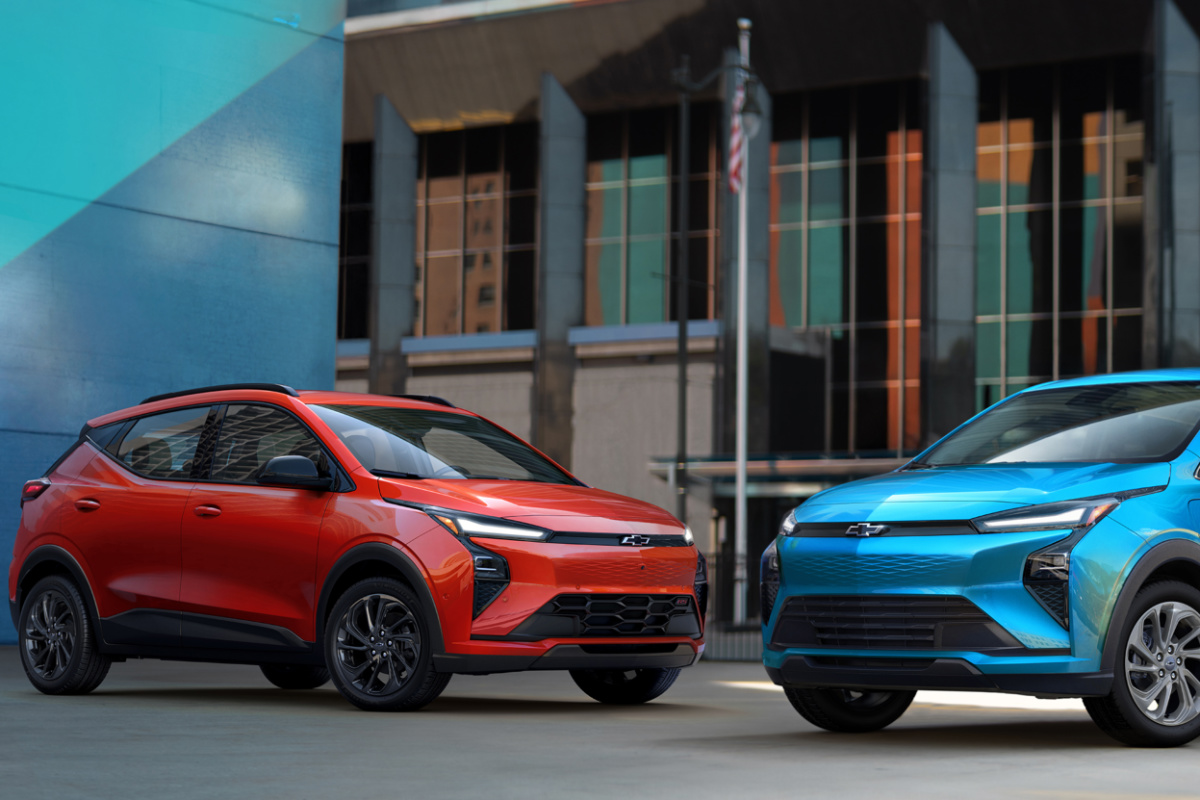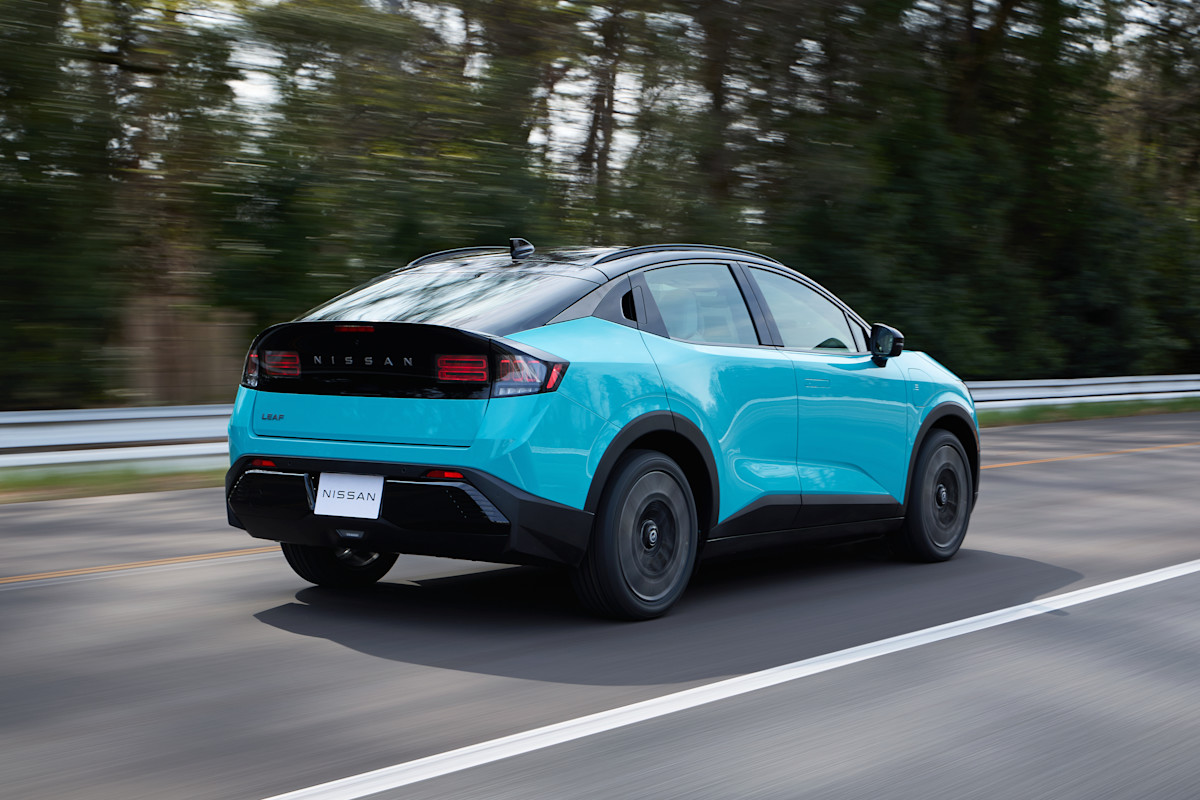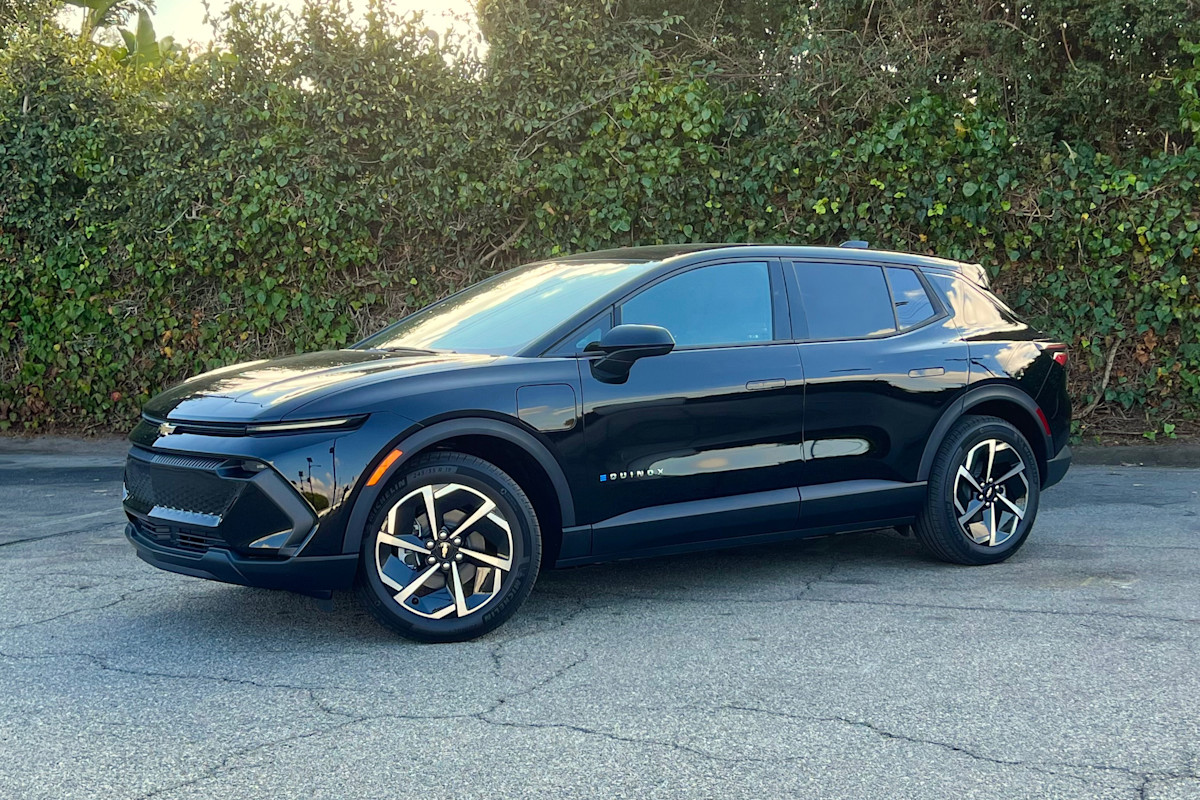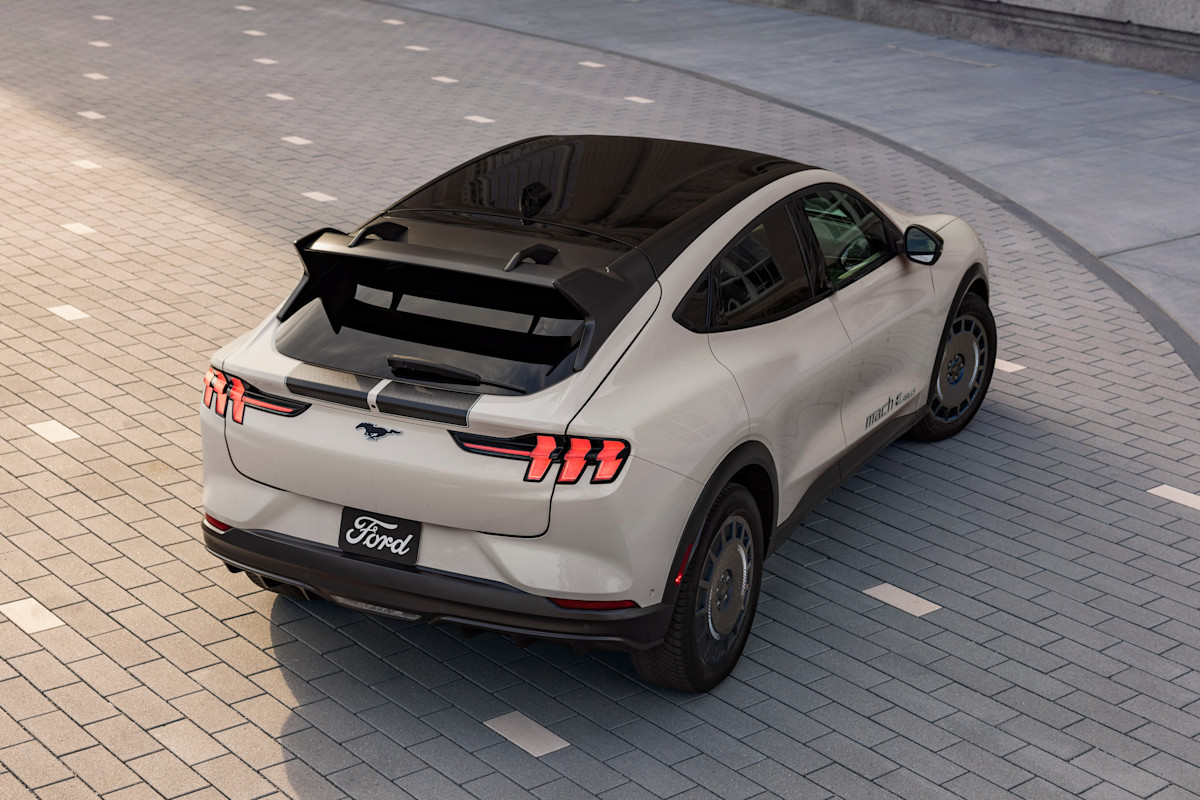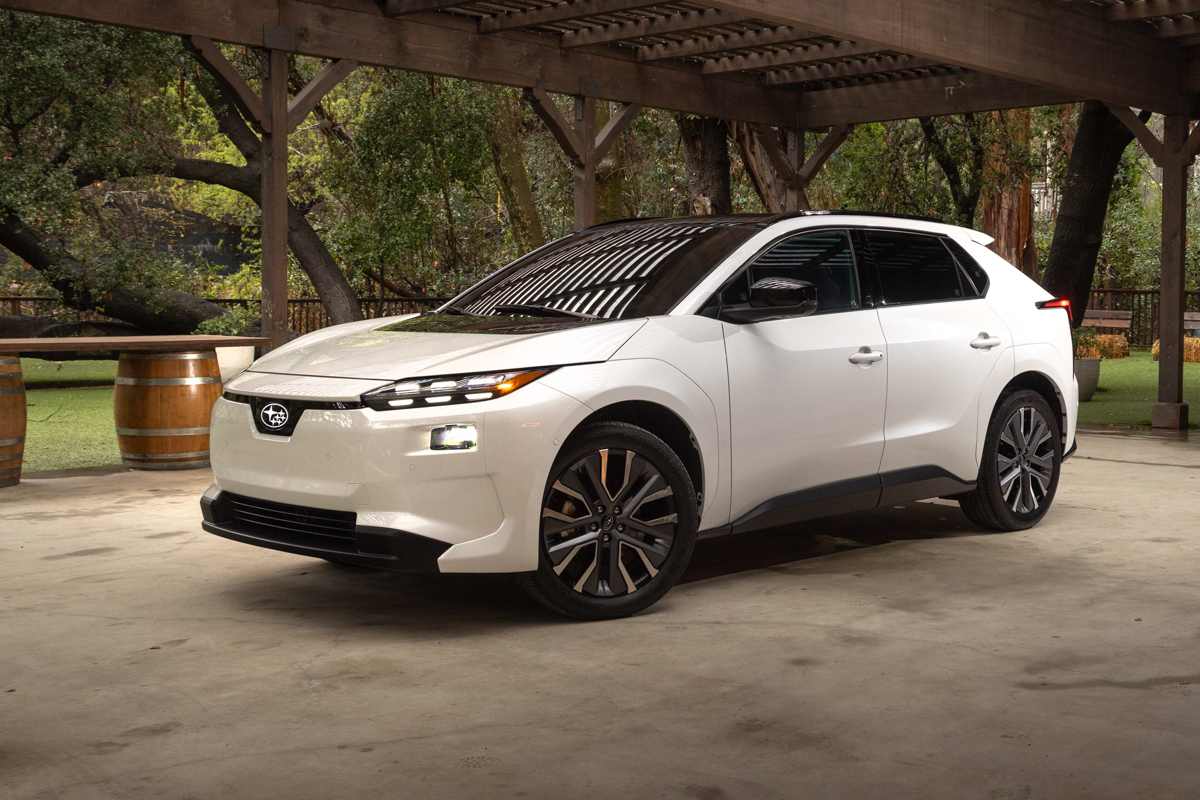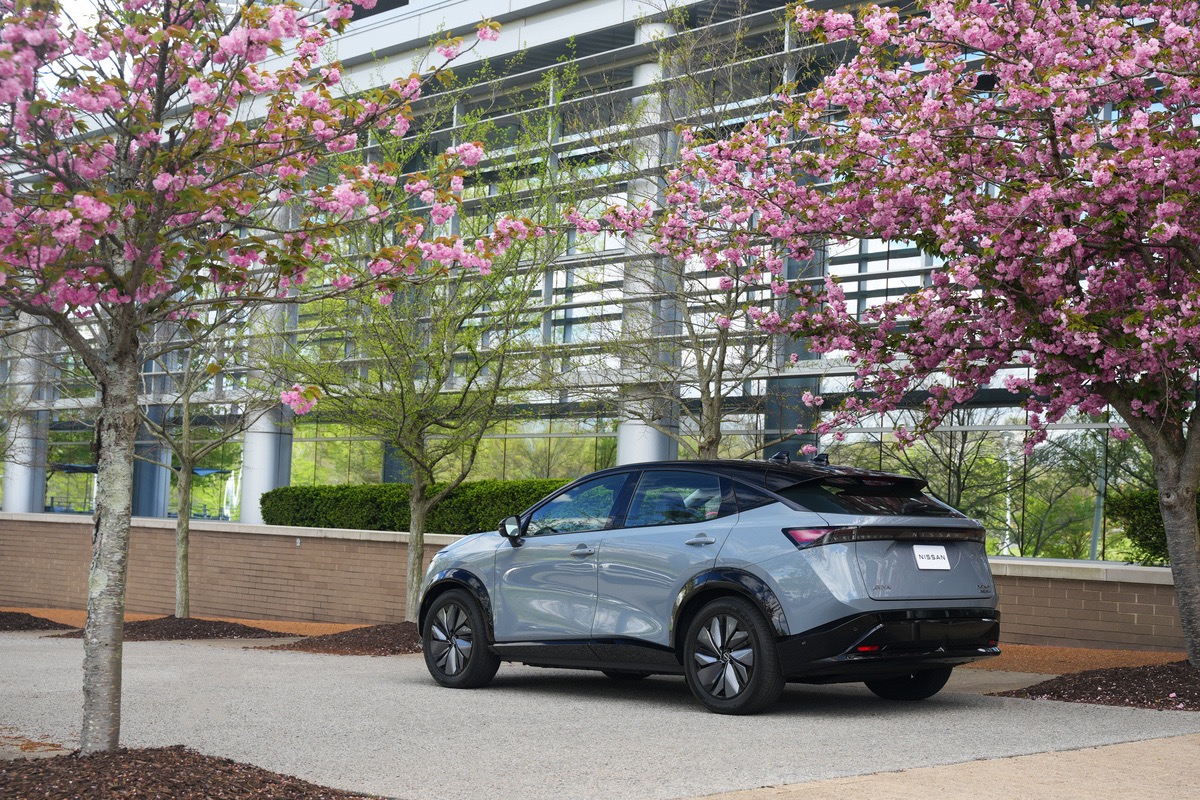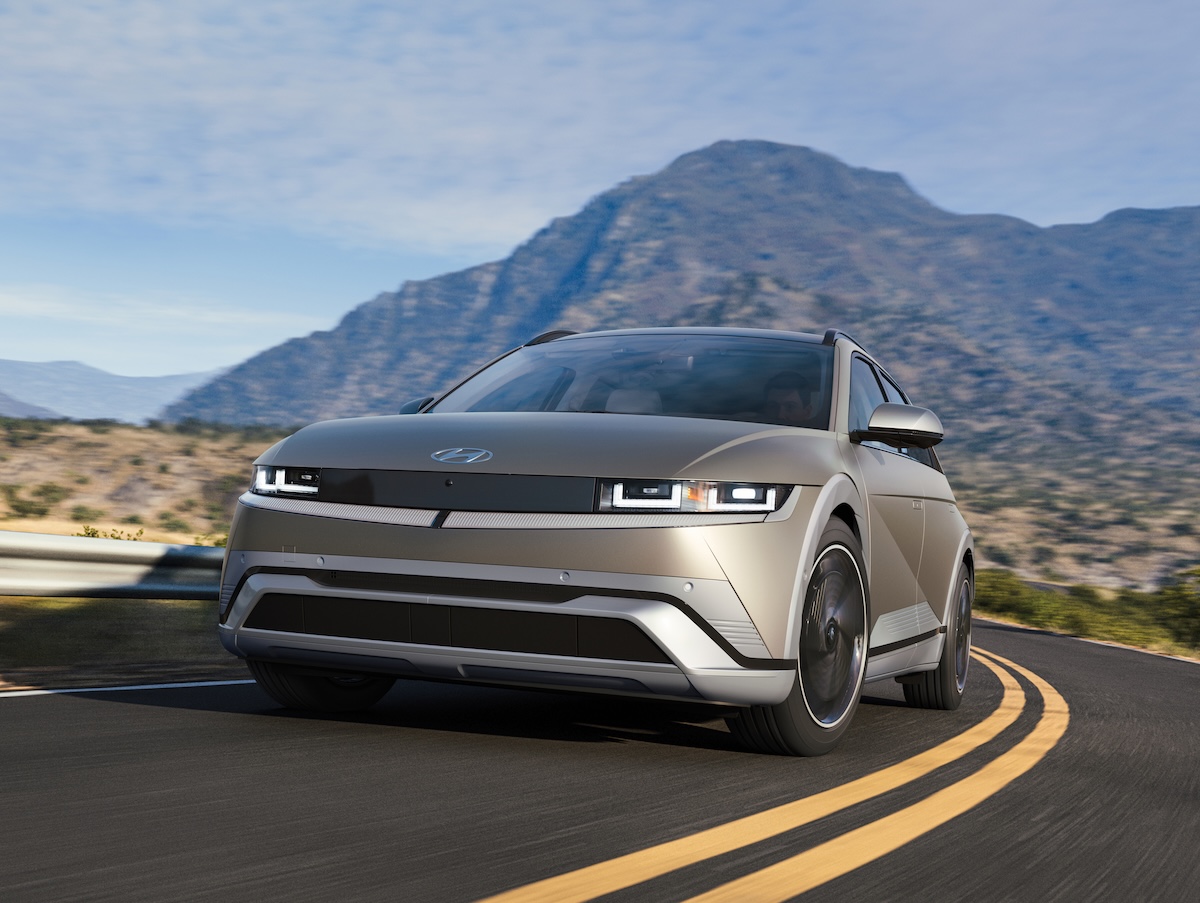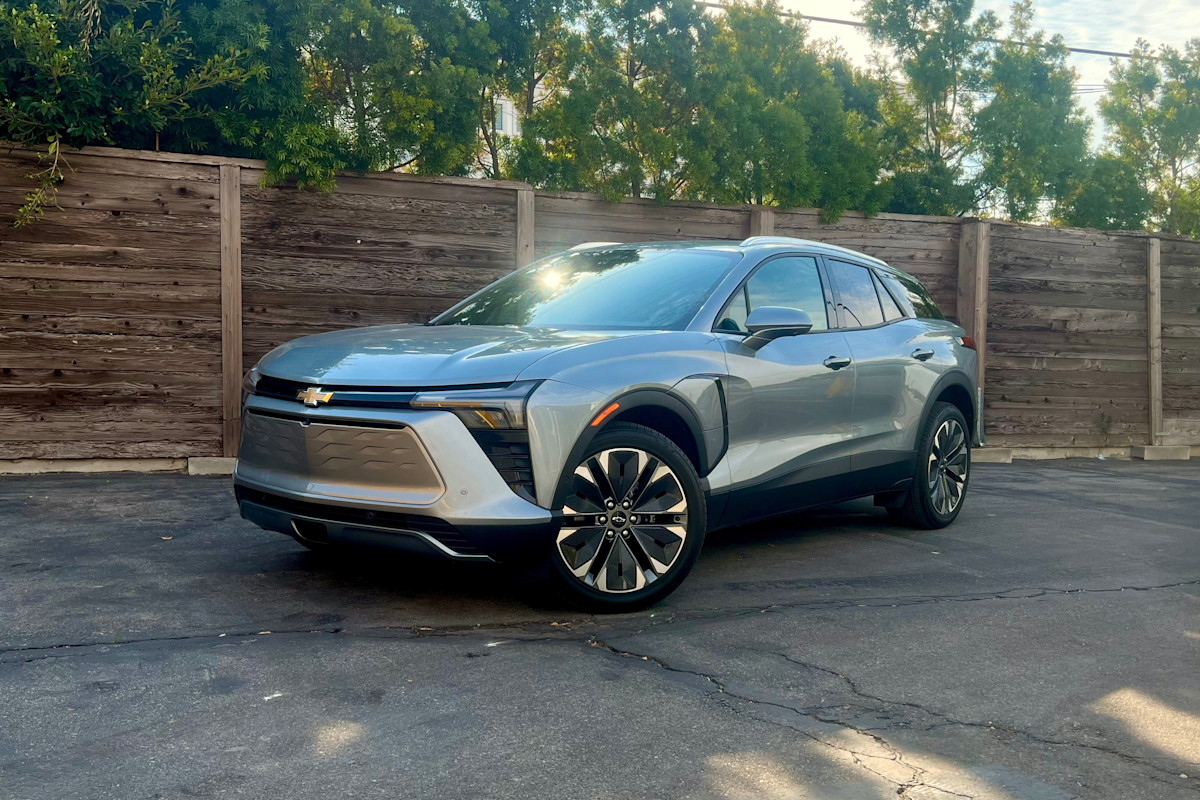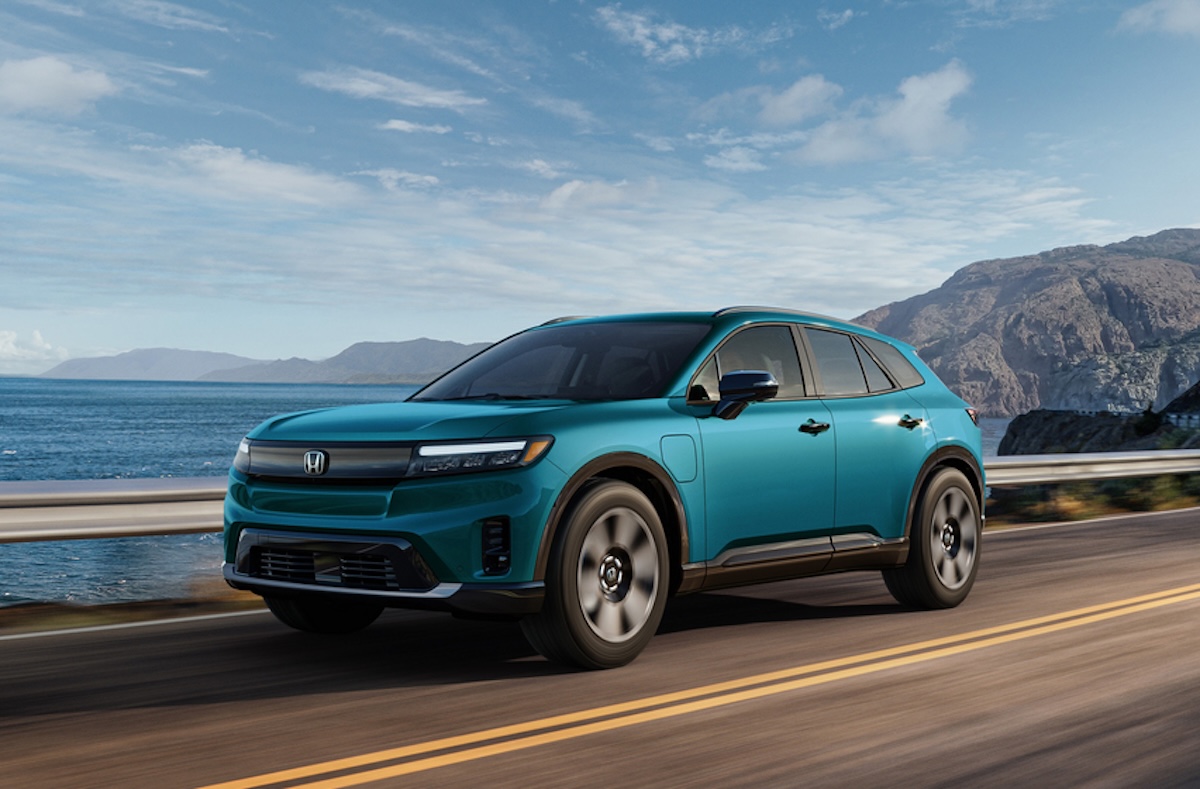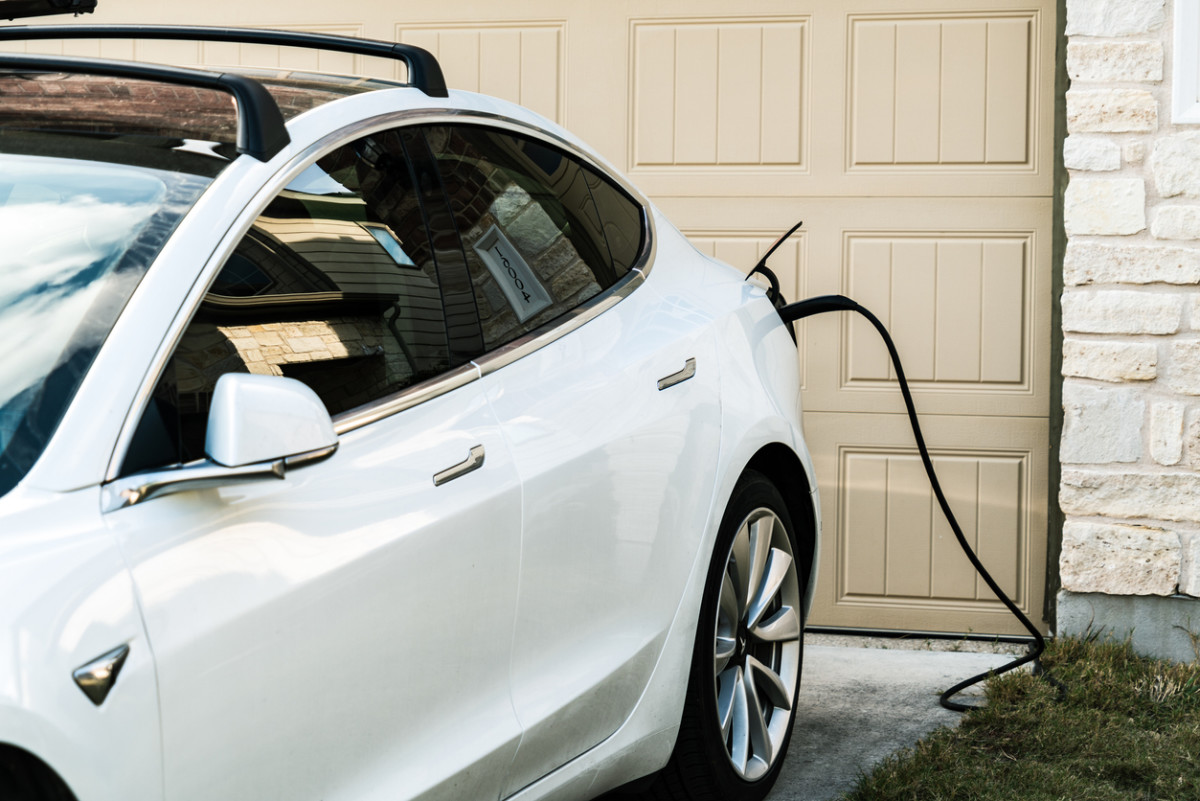Great deals on electric vehicles (EVs) continue to bring down prices to parity with gas-powered cars. With a growing DC fast-charging infrastructure, more affordable entry-level models, and dealers and automakers motivated to sell, it’s a great time to consider leasing or buying a new EV.
Below are the cheapest new EVs available in the United States in 2025, including 2026 models where data is available. We’ve listed them in ascending order of cost, with the price for each car including the destination charge, and set a cap of $50,000. We’ve also included the battery range, EV charging times, and some pros and cons of each vehicle, to help you decide which might be best for you.
Note that most automakers now offer or provide an adapter for a North American Charging Standard (NACS) port, so even non-Tesla owners can DC fast-charge at Tesla’s extensive Supercharger network.
The Cheapest Electric Vehicles in 2025
- 2027 Chevy Bolt – $28,995
- 2025 Nissan Leaf – $29,635
- 2026 Nissan Leaf – $31,485
- Hyundai Kona Electric – $34,470
- Chevrolet Equinox EV – $34,995
- Toyota bZ – $36,350
- Hyundai Ioniq 6 – $39,095
- Ford Mustang Mach-E – $39,990
- Kia Niro EV – $40,045
- 2026 Subaru Solterra– $40,000 (Est.)
- VinFast VF8 – $41,100
- Nissan Ariya – $41,265
- Tesla Model 3 – $44,130
- Hyundai Ioniq 5 – $44,200
- Chevrolet Blazer EV – $46,095
- Volvo EX30 – $46,195
- Volkswagen ID.4 – $46,520
- Honda Prologue – $48,850
- Honorable Mentions
- Other EV Considerations
2027 Chevy Bolt - $28,995
Chevy recently pulled the wraps off its long-awaited update to its popular Bolt subcompact EV. Discontinued in 2023 and now renewed for 2027, this hatchback will be the cheapest EV available in the U.S. when the base 1LT model hits showrooms in the middle of 2026. That version will sticker for $28,995; if you’re impatient, higher trim levels are available sooner. The LT with Comfort Package will launch with a $29,990 starting price; an RS trim will go for $32,995; the RS with Tech package (and a sunroof!) will top out at $35,685 — and all prices here include destination.
Highlights on this new Bolt include sleeker interior and exterior styling, a range of 255 miles on a single charge, a Tesla-style NACS charging port, a peak charging speed of 150 kW, a single-motor making 210 horsepower, and a slick 11.3-inch touchscreen infotainment system.
GM’s outstanding Super Cruise hands-free driving system will also be offered as an option.
2025 Nissan Leaf – $29,635
- MSRP (incl. destination charge): $29,635
- Range: up to 212 miles
- 10–80% DC Fast-Charge Time: around 40 minutes
The Nissan Leaf is the cheapest electric car on sale now. An electric hatchback that prioritizes affordability, the Leaf has a proven track record, a smooth ride, and a compact footprint—perfect for city life—and its e-Pedal lets you drive using just one pedal, to ease fatigue in stop-and-go traffic.
The Leaf is starting to show its age is many areas, though, because it was the first and is now the oldest electric vehicle launched in the U.S. Its comparatively small 40-kwh battery pack and 149-mile range trail all rivals, and that’s barely made up with the 60-kwh battery pack and 212-mile range. Its use of the older CHAdeMO fast-charging plug, which is now rarely supported in new charging stations, can make it harder to use on longer trips. Nissan aims to right those wrongs with the fully redesigned 2026 Nissan Leaf, but for now, the Leaf remains a low-cost option and a good city car.
2026 Nissan Leaf – $31,485
- MSRP (incl. destination charge): $31,485
- Range: up to 303 miles
- 10–80% DC Fast-Charge Time: around 35 minutes
On sale late in 2025, the redesigned Nissan Leaf makes such a large evolutionary step that it’s recognizable in name more than anything else. The former hatchback becomes a crossover more in line with the Nissan Ariya, though the Leaf retains its budget basics. Two larger battery packs offer two distinct personalities; the base 52-kwh battery pack feeds a single 174-hp motor, but Nissan has yet to disclose the range. Most models will have a 75-kwh battery pack with a 214-hp motor, and a range estimated to max out at 303 miles.
The new Leaf comes standard with an NACS port, which is far more convenient than the old Leaf’s endangered charging protocol, and accepts up to 150 kw, so it charges faster. It’s well equipped and sports an interior that makes the old Leaf seem antiquated.
Hyundai Kona Electric – $34,470
- MSRP (incl. destination charge): $34,470
- Range: up to 261 miles
- 10–80% DC Fast-Charge Time: around 43 minutes
The Kona Electric is nimble, efficient, and packed with standard features, and it’s one of the most fun-to-drive small electric SUVs.
Offered as a gas-only model as well, the second-generation Kona Electric has a much more modern look than the first model, including a larger dual-screen layout and smart climate controls. It's larger and more spacious, too, yet retains a compact footprint that makes it easy to park and maneuver around town. On the downside, it lacks an all-wheel-drive option and the 200-mile range on the base model comes up short.
Chevrolet Equinox EV – $34,995
- MSRP (incl. destination charge): $34,995
- Range: up to 319 miles
- 10–80% DC Fast-Charge Time: around 30 minutes
The Chevrolet Equinox EV replaced the Bolt as Chevy’s entry-level electric car, and while it’s no longer the cheapest EV, it’s among the best value electric cars.
With an impressive standard range, clean styling, and familiar SUV dimensions, the Equinox EV may be Chevy’s most mainstream electric car. It’s equipped with a large (17.7-inch) touchscreen and supports GM's latest infotainment system with Google built-in. It's sized and styled to feel familiar to buyers moving from a gas-powered SUV, and has a comfortable ride and a large trunk. The entry-level standard range models, which have a single electric motor and front-wheel drive, aren’t as quick as you might expect, though, and the lack of Apple CarPlay and Android Auto functionality is disappointing.
Toyota bZ – $36,350
- MSRP (incl. destination charge): $36,350
- Range: up to 314 miles
- 10–80% DC Fast-Charge Time: around 30 minutes
Formerly known as the Toyota bZ4X, the refreshed 2026 Toyota bZ improves in most EV metrics, chiefly range, which increases from 252 to 314 miles for models with the larger 74.7-kwh battery pack. Add a second motor for all-wheel drive, and the range drops to 278 miles, while the budget model has a smaller 57.7-kwh battery pack with a range of 235 miles.
Co-developed with Subaru and built on a shared platform with the Solterra (see below), the bZ comes with an NACS port for quicker DC fast-charging times and native access to Tesla’s Supercharger network. It’s well-equipped and loaded with safety features, and the refreshed interior streamlines the old model’s odd, recessed instrument cluster. It goes on sale late in 2025 and the 2025 bZ4X is still on sale now.
Hyundai Ioniq 6 – $39,095
- MSRP (incl. destination charge): $39,095
- Range: up to 342 miles
- 10–80% DC Fast-Charge Time: around 18 minutes
The Hyundai Ioniq 6 sedan has one of the longest ranges in its class, a sleek design, and ultra-fast charging—a great fit for style-conscious drivers with longer commutes.
The minimalist cabin includes ambient lighting and a digital gauge cluster for a futuristic vibe, while the sleek shape gives an ultra-low drag coefficient that maximizes energy efficiency. Its sloped roofline cuts into rear headroom, though, and premium trims climb into luxury car pricing territory. An updated version, with a new front end and an upgraded interior, is due for the 2026 model year.
Ford Mustang Mach-E – $39,990
- MSRP (incl. destination charge): $39,090
- Range: up to 320 miles
- 10–80% DC Fast-Charge Time: around 32 minutes
The Mustang Mach-E delivers strong performance, a spacious interior, and loads of tech, including Ford’s BlueCruise hands-free driving system. With available AWD and two battery options, it suits both commuters and road-trippers. Driving dynamics are sportier than those of most electric SUVs, and the wide touchscreen integrates smoothly with wireless Apple CarPlay and Android Auto.
Its starting price less competitive compared to some other electric SUVs on this list.
Kia Niro EV – $40,045
- MSRP (incl. destination charge): $40,045
- Range: up to 253 miles
- 10–80% DC Fast-Charge Time: around 43 minutes
The Kia Niro EV is a compact crossover SUV with a surprisingly spacious interior, and style-conscious buyers will appreciate the two-tone paint option. It also includes Remote Smart Park Assist, which allows you to maneuver the car in and out of tight parking spaces using just the key fob while standing outside the vehicle.
It’s the only vehicle on this list that’s also sold as a hybrid or plug-in hybrid. However, it lacks an AWD option, and its DC fast-charging speed is slower than most others on this list.
2026 Subaru Solterra– $40,000 (Est.)
- MSRP (incl. destination charge): Estimated to be $40,000
- Range: up to 285
- 10–80% DC Fast-Charge Time: around 30 minutes
Unlike the related Toyota bZ, the refreshed Subaru Solterra comes standard with all-wheel drive. That’s Subaru’s thing, as is its standard suite of advanced safety features and lots of equipment. The larger 74.7-kwh battery pack feeds two motors producing either 233 hp or 338 hp in the Solterra XT grade, while range peaks at 285 miles.
The Solterra looks new, too, with a fresh front fascia, new wheel designs, and available body color fenders that clean up the sides. There’s also a new NACS port enabling access to Tesla’s Supercharger network and a max charge rate of 150 kw.
VinFast VF8 – $41,100
- MSRP (incl. destination charge): $41,100
- Range: up to 256 miles
- 10–70% DC Fast-Charge Time: around 31 minutes
Strong lease deals and a competitive standard range make the VF8 a good newcomer, with modern tech and sharp looks that are worth considering.
The VF8 includes a large 15.6-inch touchscreen with built-in voice control and an uncluttered cabin layout. Seating is comfortable and spacious for passengers in both rows. VinFast is new to the U.S., so service locations and dealership coverage may be limited.
Nissan Ariya – $41,265
- MSRP (incl. destination charge): $41,265
- Range: up to 289 miles
- 10–80% DC Fast-Charge Time: around 35 to 40 minutes
The Nissan Ariya brings upscale touches to the automaker’s lineup with a refined cabin, AWD options, and a respectable all-electric range with the larger 87-kwh battery pack. The 63-kwh battery pack tops out at 216 miles of range.
Inside, the Ariya features a floating center console and wood-patterned dashboard, lending it a more premium feel than most in its price range. Nissan’s ProPILOT Assist also adds hands-on driver assistance for highway cruising. Its charging speeds are slower than rivals', though, and the price point rises steeply with AWD or long-range trims.
Tesla Model 3 – $44,130
- MSRP (incl. destination charge): $44,130
- Range: up to 357 miles
- 10–80% DC Fast-Charge Time: around 25 minutes
The Tesla Model 3 offers rapid acceleration, a minimalist interior design centered on a large touchscreen, and easy access to Tesla’s extensive Supercharger network, making it one of the most popular electric sedans on the market today.
Updated for the 2024 model year, the Model 3 is more compelling than ever, with improved cabin materials and build quality. The base Model 3 Long-Range Rear-Wheel-Drive version has an EPA-estimated range of 357 miles on a full charge. That’s impressive, but inconsistencies in fit and finish remain, and the limited physical controls and over-reliance on the touchscreen may not appeal to all drivers.
Hyundai Ioniq 5 – $44,200
- MSRP (incl. destination charge): $44,200
- Range: up to 318 miles
- 10–80% DC Fast-Charge Time: around 20 minutes
The Hyundai Ioniq 5 pairs futuristic looks with innovative tech, ultra-fast charging, and generous space, making it one of the most well-rounded EVs. It also supports vehicle-to-load (V2L) capability, letting you power small electronic items or camping gear from the battery.
Its flat floor and roomy back seat make it family-friendly, despite its compact footprint. The Ioniq 5’s range dips in AWD models, but Hyundai offers an enticing warranty and the Ioniq 5 is one of the fastest charging EVs in this price range.
Chevrolet Blazer EV – $46,095
- MSRP (incl. destination charge): $46,095
- Range: up to 334 miles
- 10–80% DC Fast-Charge Time: around 30 minutes
The Chevy Blazer EV enters the 2026 model year virtually unchanged, except for a lower price and more available trim options. Chevy offers FWD at the entry point of the lineup, making for a more affordable, longer-range option. It could also be had in sporty rear-wheel-drive configurations, upholding the sporty promise of the Blazer EV’s design. A RWD model with a larger battery pack also boosts the Blazer EV to 334 miles of range.
Even though Chevy did most of the design work on the shared platform with the Honda Prologue, the Blazer EV handles with more heft and less grace. It also lacks Apple CarPlay and Android Auto integration. With the excellent but smaller Equinox EV available for more than $10,000 less, the Blazer EV isn’t sporting enough to justify the upcharge in Chevy’s growing family of electric cars.
Volvo EX30 – $46,195
- MSRP (incl. destination charge): $46,195
- Range: up to 253 miles
- 10–80% DC Fast-Charge Time: around 30 minutes
Volvo’s smallest and quickest model carries one other superlative detail: the EX30 is the Swedish brand’s most affordable electric vehicle—and it could be even cheaper if the single-motor rear-wheel-drive model eventually arrives in the U.S. For now, the 422-hp dual-motor EX30 sprints to 60 mph in the mid-three second range. It’s all-wheel drive with balanced handling, and its 64-kwh battery pack allows for an estimated 253 miles of range.
The EX30 is smaller than the EX40 but it still seats four passengers in relative comfort. There are some cost-cutting features inside, but it upholds Volvo’s spartan interior design and a value proposition that’s unusual in the premium EV space.
Volkswagen ID.4 – $46,520
- MSRP (incl. destination charge): $46,520
- Range: up to 291 miles
- 10–80% DC Fast-Charge Time: around 28 minutes
The Volkswagen ID.4 has a quiet ride, a spacious interior, and available AWD—a great fit for families switching from gas SUVs. It includes adjustable ambient lighting and heated seats, even in lower trims, along with great rear-seat legroom.
Not everyone will warm to Volkswagen’s clunky infotainment touchscreen system and touch-sensitive controls, though, and base trims don’t have an especially impressive battery range.
Honda Prologue – $48,850
- MSRP (incl. destination charge): $48,850
- Range: up to 308 miles
- 10–80% DC Fast-Charge Time: around 35 minutes
Related to the Chevy Blazer EV (see above), the Honda Prologue benefits from compelling dealer and automaker incentives. In design terms, it’s calmer and more approachable than the Blazer EV, and it handles more evenly. In a strange twist, Honda offers wireless and wired Apple CarPlay and Android Auto, whereas Chevy doesn’t. It’s a small thing, but let the people eat cake.
Like the Blazer EV, the rear seats have raised hip points that can make long-distance travel uncomfortable for rear passengers. Its familiar dash and touchscreen controls should ease the switch from gas to electric for prospective owners.
Honorable Mentions
Other automakers—such as BMW, Volvo, Lucid, Rivian, and Porsche—offer premium EVs with standout specs and tech, but they sit firmly outside our price cap in most trims. Some examples may be available as used EVs.
Other EV Considerations
There are a few things to think about when buying a new EV: How close are you to public charging stations? Do you want a Level 2 charger at home? Does your state offer tax breaks, rebates, or incentives? And don’t forget to check if your local power company offers off-peak electricity rates or rebates for charger installation.

